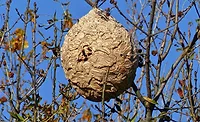It’s All about Monitoring
What do you monitor for?

Chances are, you monitor for plenty of things in your facility. You probably test for allergens. There are metal detectors to find metal contaminants. Maybe even biologic sampling for things like Listeria or Escherichia coli. You also monitor for pests. Most companies will likely hire a third-party pest management company to provide this service. A few still have an in-house team that covers pest control. Either way, the people overseeing the pest management program at the site still have some things to think about when it comes to monitoring for pests.
Are You Monitoring for the Right Thing?
While your pest management professional should be assessing the site for potential pests, it’s still your facility. There are records of which pests were an issue in the past, and, based on what type of food is being produced, specific pests that may infest the raw ingredients coming in or your finished products. All the major audit schemes require that there be an annual pest management assessment that addresses what pests pose a risk to the site and what means are in place to mitigate those risks. Both you, knowing your site, and the pest management professional, who knows pests, need to work together to determine which pests are likely. The first step is always identifying the problem: Knowing what pests are and could be an issue means you can monitor for them properly.
Are You Using the Right Tools in the Right Way?
Once the possible pests are identified, the right monitoring tools can be used. Using the right tools allows for early warning when pest issues start to occur. There was a facility that was having an Indian meal moth problem. They produced many types of cereals and had been struggling with the moths for months in their incoming goods warehouse. I was told that they were not finding many in their monitors, but they were finding lots of infested raw ingredients. Turns out, their “monitors” were insect light traps (ILTs). While these can catch a few scattered moths (and did in this case), they weren’t very attractive to this particular stored-product moth. The plant should have been using pheromone traps specific to Indian meal moths. Once they switched over to the correct monitoring devices, they were able to accurately track what was going on and get the situation under control. If the right tools aren’t being employed, it’s hard to track the issues.
Monitors have to be used correctly as well. Walk around your site and you will most likely see some rectangular metal boxes on either side of the doors. Ever see one of these propping open a door? Or see one sitting on a shelf because it was in someone’s way and they moved it? These little metal boxes are there to intercept and monitor for rodents. When one is used to keep a door open, not only are you literally opening a door for rodents to get in, but you are also removing the device that is intended to capture them if they do. I’ve seen ILTs that have been unplugged so a cell phone can charge. If that light isn’t working, it’s not catching those flying insects that get in. You not only have to ensure the right tool to pair with the right pest, but you also have to use that tool properly. If a monitor isn’t used as intended, you can’t capture the pests and work toward solving the problem.
What Do the Data Mean?
Say a mouse was captured in a trap at your facility. What does that mean when pests are captured in a monitoring device? When your pest management professional comes and drops off their report and pests are captured, the first question should be “why?” If you know that mouse was captured in a trap right next to a personnel door, the data can be used to investigate that particular door and the area around it. Then you can start to find out why that mouse got in.
Ensuring that you have good reporting is important. I dealt with a pet food warehouse that was having an ongoing problem with stored-product beetles. They had the right pheromone traps in, presumably, the right places, and they were recording that they had caught beetles every week when they checked them. However, they weren’t recording how many beetles or in which particular traps. They could have found one beetle in every single trap in the warehouse or 100 in just one trap. There was no way to know. The data of how many were found, week after week, could have shown population changes. Knowing what individual traps had captured could have shown the spread and potential hot spots to focus control efforts on. In this case, the data were meaningless because all we knew for sure was that there were beetles. Data from these monitors start to tell a story about what is happening, where it is happening, and how it may be changing.
What Are You Doing with the Data?
Now that there are good data, you have the start to the story. Using that data is the next step and is the body of the story and, hopefully, its ending. Imagine if your water bill at your home kept going up month after month. Chances are, after a few months, you may start to wonder why more and more water is being used. Maybe there is a leak somewhere. Maybe your neighbor is using your garden hose to water their lawn. Whatever the reason, investigating why and then fixing it is the goal. Same thing with pest monitoring. The information is there, now doing something about it and trying to fix the underlying cause is the next step. Knowing there is a mouse in a trap by a specific door means that area can be investigated and the broken door seal that is found can be repaired so no other mice get into the site.
Looking for quick answers on food safety topics?
Try Ask FSM, our new smart AI search tool.
Ask FSM →
Using the data can mitigate problems early when they are still small and manageable. Fixing pest issues early can save a company money. A facility that made cookies and crackers started finding German cockroaches in their monitors. These monitors were all located in the employee break room. The site responded by having the employees take all food out of the break room and doing an intensive deep clean. The pest control company used targeted baiting in key areas of that room. They reacted quickly (only a few cockroaches in the monitors), found the cause (old food behind refrigerators and cabinets), addressed it (cleaned), and only treated where they needed to. If they hadn’t, the problem would have spread to the production floor, contaminated their lines and product, and created a large shutdown and a much more widespread and expensive treatment. Applying the data points to the emerging issues shows where the issues may be and often what to do about them.
One last thing to consider about the monitoring program currently in place at your site: When was the last time the monitors were changed? If there are monitoring devices in place that have been in the same spot for years, are they still effective? Are they still collecting data that give you a story? Many things change over time: There might be new processing equipment, new products, even changes in weather that can impact pests and pest pressure. If there are rodent bait boxes on the outside of the site but no activity in the ones on the south side of the building, some of those could be relocated to the side where there is more activity. Maybe an addition was put on the facility, and now some doors are sealed and don’t need ILTs in that area. When these large changes happen, make sure the pest control team knows and adjusts the monitoring devices. At a minimum, the annual pest management assessment should address any changes that have occurred over the past year and discuss the changes in the pest monitoring plan to respond to those changes. The monitoring plan should adapt to the changes that transpire at the site.
Monitoring for pests, just like monitoring for allergens or pathogens, is important to keep your facility and products safe. The pest control service should be providing the information and the right tools and collecting the data. It’s up to the facility to make sure the monitors stay in the right spot and aren’t misused. Once the data are collected, they have to be used to find the root causes and solve those problems when they are still small. Have a conversation with your pest management company to ensure the site is covered for the pests that may be an issue and respond to what the data are saying. A story is only as good as its ending; you want your data to tell the story and have a quick response to end the problem!
Chelle Hartzer, M.Sc., BCE, is a consulting entomologist at 360 Pest and Food Safety Consulting and has been helping clients solve complicated pest issues for over a decade. Chelle holds an M.Sc. in entomology from Kansas State University and is a board-certified entomologist (BCE) in urban and structural entomology. She is also a Preventive Controls Qualified Individual and earned her Lean Six Sigma Green Belt.








